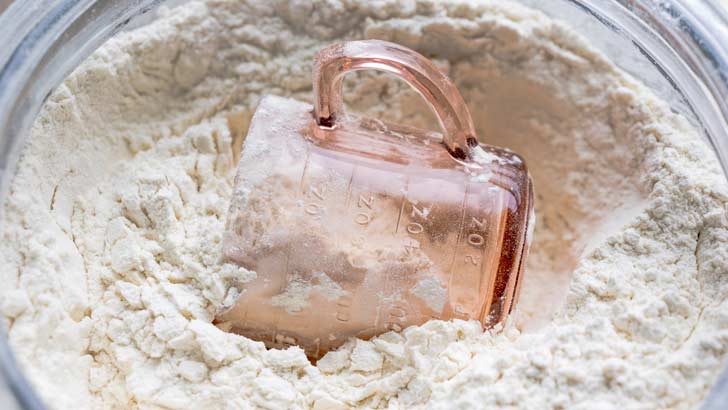The flour jar philosophy to help you make money simple again
By Ben Kingsley, Bryce Holdaway
Do you want to make money simple again?
Have you ever wondered whether there's a simple way to manage your money, that optimises and minimises the amount of interest you pay to the bank while trapping more surplus and giving you peace of mind... all while committing no more than 10 minutes a month to manage it?
And wouldn't it be great if such a system didn't discriminate its effectiveness based on how much you earned or how you got paid and made it just as easy to use for a university student on casual wages as for a CEO of an ASX-listed company earning a high salary?
Well, we think that such a system does exist.
We call it the Money SMARTS system and we're on a crusade to help as many Australians as possible to adopt our simple and effective approach to managing their money and trapping their surplus to improve their current lifestyle and ideally help them to grow their existing wealth base.
Money SMARTS is an efficient and highly effective rules-based money management system designed to help you organise your money to stop you overspending and trap more surplus as a result. It guarantees you gain a better understanding of your cash flow movements and greater control of your money while ensuring you never "unconsciously" overspend ever again.
Every dollar in our system has a role to play and an overall job to do for you. The system adopts simple yet proven techniques of successful money management approaches from yesteryear.
Think back to your grandparents' day where many homes managed their cash using household jars - often recycled from their primary use as holders of flour and sugar.
Then when grandpa (back then there was generally only one income per household and the husband went out to work) would get paid, a portion of the pay packet would be placed in the jar for the mortgage, another portion would be in the jar for food and bills, and whatever was left over would end up in the savings jar.
It was a very simple approach but it worked, right? They paid cash for everything and only spent what they had ... and never on credit!
Well, we know it's a completely different landscape today.
We don't get paid in cash anymore and money in the 21st century is predominantly digital. The result is that we now park our money in the bank, instead of separate "flour jars", and as a result we've all become a little less connected to the flow of money that runs through our households.
We're not convinced that "progress" means "better" in this case.
However, the solution lies in adapting the wisdom of the past to the realities of modern-day money flow.
Using the Money SMARTS system, you can quickly adapt by only ever needing a maximum of three bank accounts. Yep, only three!

Bank account No. 1: primary bank account
In the primary account (bank account No. 1) we allocate our money into five virtual flour jars - one for each area of spending.
1. Living and lifestyle jar (your weekly allowance we refer to as your seven-day float). 2. Credit card jar (to pay regular bills only). 3. Direct payments jar (to pay some bills/accounts directly). 4. Loans jar (for the monthly loan repayments). 5. Provisionings jar (covers ad hoc future spending allocation).
What will be left over is your surplus money that you capture!
Tip: For households with a mortgage, we strongly recommend the primary account is a 100% transactional offset account. Your primary account receives every cent you earn and pays out everything you spend via the different internal flour jars.
Bank account No. 2: living and lifestyle
The living and lifestyle account (bank account No. 2) is the vehicle for your spending money.
You transfer a weekly allowance in this account - i.e., your seven-day float - to pay your day-to-day living costs for, as the name suggests, one week.
Once your weekly allowance is worked out (via steps one to three in our seven-step system - more on that later) your spending money is transferred into this account from your primary account.
It's treated like cash - but, just like in your grandparents' time, when it's gone, it's gone! There is no more money to spend until the next weekly transfer, which is ideally on a Thursday.
Bank account No. 3: credit card
The credit card jar (bank account No. 3) plays a very important but very restricted function.
It is to only pay bills (no discretionary spending money here please) - and it must be a credit card that offers a 55-day interest-free period.
Of course, there's one rule: you must pay off the rolling balance every month, because otherwise you'll be charged interest and this will cost you more than you make by using the bank's money in the short term.
It's important to use the auto-sweep option to automatically pay the due amount each month to avoid paying late and being charged interest.
The job of the direct payments jar is to clean up the bills that weren't able to be paid via the credit card (such as rent), or where the credit card surcharge meant it was cheaper to pay the bills directly. In these instances, you pay these bills directly from the primary account to the supplier.
The loans jar is what it says it is. It's not a bank account; it quarantines the loan repayments money within the primary account and the money is dispatched when the repayments fall due. This jar has a very straightforward function.
When it comes to paying off loans, we recommend those people with multiple debts pay off their most expensive debt first. If you have multiple debts, explore the potential for consolidating your debts into one debt for improved ease of management, but also to reduce the cost of the debt to a lower interest rate.
The provisionings jar is where you set aside money for future planned and, at times, ad hoc spending.
It quarantines the money you set aside within the primary bank account for all your provisions spending - those major expenses and one-off purchases that occur each year (like a holiday spending or medical costs). It covers some items you want to track your spending on and money you want to allow for "just in case".
So what are the steps to financial peace?
There are seven steps in the Money SMARTS system.
1. Gather 2. Sort 3. Calculate 4. Banking 5. Checkup 6. Tweak 7. Rollover
Unlike a traditional budgeting "bottom-up" approach to money management, where you have to track everything you spend, Money SMARTS is a "top-down" approach to understanding and managing your money. To ensure you have trapped enough surplus money to meet your financial goals, you need to start with the big picture.
In steps one and two, you gather all your receipts and statements to work out where your money goes.
In step three you establish your overall income and overall spending plan (regular and provisions spending); there's then no need to get into or keep track of every expense item. Surprises are great for birthdays but they're terrible when it comes to managing money!
With our top-down approach, you need to start with a time frame for planning purposes. Money SMARTS uses a year-by-year approach as it fits well with annual periods used for many other aspects of money and cash flow such as annual bills, taxation, bonuses, and so on.
So at the top level you need to have worked out how much income (money in) you expect to receive for the coming year and how much you expect to spend for the same period (money out).
Keeping it simple means starting with the yearly expenditure rather than starting from your daily expenditure. In theory, what money's left must always be enough for what's coming up. That's why you plan out your year's spending and your target monthly surplus first up.
In step four, once you set up your three bank accounts your system is then ready to roll. You have your starting numbers, your current financial position and target for the surplus money you are aiming to achieve. Now you are on your way.
In step five you only have to do your monthly checks (which should only take 10 minutes or less each month) and make the odd tweak in step six before the yearly rollover celebrations begin in step seven because of all the money you've saved before it all kicks off again for another year!
Money SMARTS helps you plan, organise and manage your money because it's a rules-based, fully defined and structured solution.
And, best of all, people love it due to the fact it's simple to set up, very time-friendly to run and, most importantly, it works!
Get stories like this in our newsletters.




